The Anatomy of a Fake: A Deep Dive into Modern Document Forgery
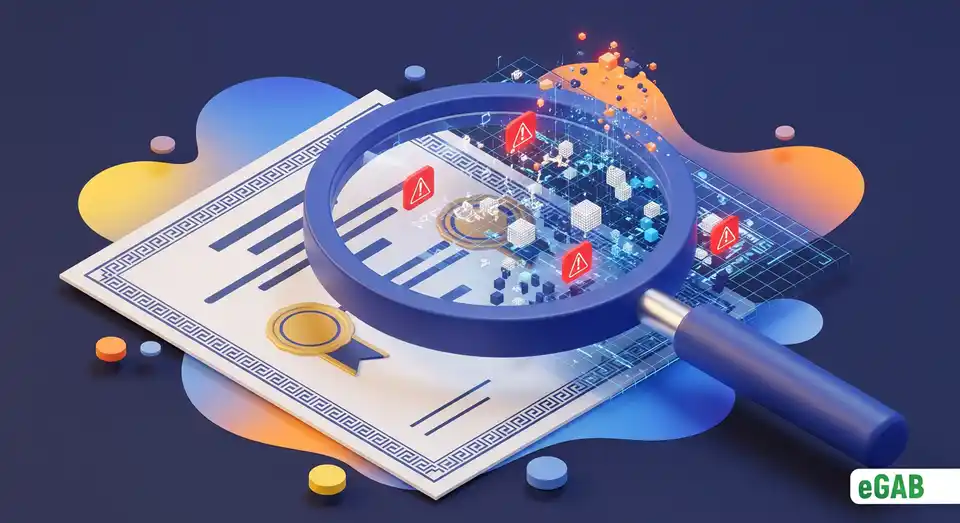
 Author:
Artem Grigoriev
Author:
Artem Grigoriev
- The Foundational Flaws of Paper-Based Security
- The Forger's Toolkit: How Genuine Documents Are Altered
- The Counterfeiter's Blueprint: Creating Fake Documents from Scratch
- How Forgers Defeat Common Security Features
- How eGAB Makes Forgery Technically Impossible
- Summary: The End of an Illusion-How Modern Forgery Shattered Paper Security
Let's start with a quick thought experiment. Think about the last official document you handled-maybe it was a job offer, a professional certificate, or proof of address. Did you question its authenticity for even a second? Probably not. We're all taught to trust paper. But here's the uncomfortable truth: that trust is now fundamentally broken. Anyone with a good scanner and Photoshop can become a master forger.
Modern document forgery is no longer a rare art form; it has exploded into a widespread threat. This is fueling a massive surge in everything from identity document fraud to the tampering with legal documents . In this article, we're going to dissect the complete anatomy of a fake. We'll show you the exact forgery techniques criminals expertly use to alter genuine papers and create incredibly convincing counterfeit documents from scratch. We’ll also uncover how they skillfully bypass common security features like holograms and watermarks.
📘 This post is part of our comprehensive guide to "The Problems with Paper Documents: A Complete Guide". Explore it to find answers to all your questions ;)
The Foundational Flaws of Paper-Based Security
Have you ever really stopped to consider it? We place so much faith in simple pieces of paper, building entire careers, granting access to secure areas, and making huge financial decisions based on them. But here's the fundamental problem: the security of these documents is, quite frankly, broken. The hard reality is that paper-based systems aren't just a little outdated; they're dangerously vulnerable, creating a host of critical paper document security risks. This naturally raises a critical question for anyone who relies on them: what are the biggest security flaws in paper documents?
The IBM Cost of a Data Breach Report 2023 found something staggering: a human element is involved in 74% of all security breaches. This alarming statistic makes any process that relies on someone physically handling a document an accident waiting to happen, often leading to a physical data breach from insecure document storage. For companies, the true cost of paper is huge, averaging $4.45 million per incident.
Here's the core issue: for physical documents, there are no universally enforced security standards. Think about your credit card, which can ping a global financial network for verification in seconds. A paper certificate can't do that. Because it lacks cryptographic security (a technical way of saying there’s no unforgeable digital fingerprint), it has no reliable, built-in method to check if it's the real deal. So, what are verifiable credentials and cryptographic security for documents? It's a method that embeds a unique, verifiable digital signature into a document, making its origin and integrity mathematically provable. Without it, there's absolutely nothing to prove where a document came from or to guarantee it hasn't been altered.
This systemic failure is pervasive ; in fact, cybersecurity analyses consistently find that a shocking number of company folders containing sensitive information aren't properly protected. What's also deeply worrying is that many organizations still haven't adopted automated solutions-the very tools that can spot a clever forgery. This weak security makes reliable identity verification nearly impossible, leaving the door wide open for imposters.
Why It Matters: Let's be blunt: the security of a paper document is mostly an illusion. Its integrity hinges entirely on human checks that can, and do, fail, which is a major reason why employees are wasting so much time on paperwork. It also relies on a chain of custody (the chronological paper trail showing who has handled the document) that's incredibly easy to break. This fragility has created a system where trust is based on a hopeful assumption, not on verifiable proof. The result? It leaves organizations wide open to devastating financial and reputational damage from fraud. This is why a shift toward cryptographic verification isn't just an upgrade-it's an absolute necessity.

The Forger's Toolkit: How Genuine Documents Are Altered
Think a genuine document is safe from tampering? You might want to think again. To turn an authentic document into a masterful lie, a skilled forger uses a whole arsenal of tricks, blending old-school craft with modern tech. This is the world of modern document forgery . It's a craft that has evolved, moving from careful physical manipulation to lightning-fast digital attacks. So, what are the most common methods of document forgery? The answer lies in a combination of classic and cutting-edge forgery techniques .
The traditional methods often sound like something right out of a spy film. Forgers use techniques like chemical washing , where they apply solvents like acetone to carefully dissolve the ink of specific details-a name, a grade, or a date. This is a common method for tampering with legal documents like wills or contracts. Then, with seamless precision, they insert their own fraudulent information. In a process known as signature lifting , they can use special solvents and tape to physically "lift" a genuine signature and meticulously transfer it onto a fake document. In other cases, they might use a scalpel to delicately scrape ink from the paper’s surface, making tiny changes that are nearly impossible for the naked eye to spot.
But the arrival of digital tools has been the real game-changer. Today, the most common method is digital alteration . A forger just needs one high-resolution scan of a legitimate document. They can then import this scan into software like Adobe Photoshop , where they’ll tweak the details with pixel-perfect precision. Finally, they print the altered document on nearly identical paper. This digital approach is now being turbocharged by generative AI (artificial intelligence that can create new, realistic content), a technology that's fueling a dramatic rise in sophisticated document forgery. This directly answers the question of how is AI being used to create fake documents? In fact, the Onfido 2024 Identity Fraud Report shows an alarming spike in deepfakes (hyper-realistic but fake videos or images created by AI) and AI-driven fraud attempts. These new technologies are learning how to automate and perfect forgeries on a massive and unprecedented scale.
Takeaway: The line between a real document and an altered one has become dangerously thin. Forgers can now manipulate genuine documents so skillfully that a quick visual check is no longer a reliable defense. Here's the bottom line: you can't fully trust a document if you're unable to digitally verify its data against its original source.
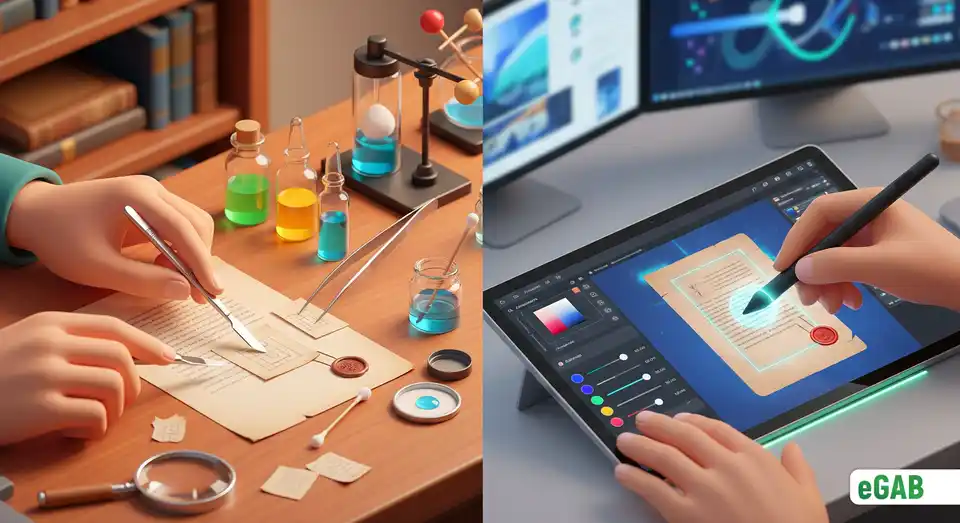
The Counterfeiter's Blueprint: Creating Fake Documents from Scratch
Creating a fake document from scratch used to be the work of a master criminal with a printing press hidden in a basement. Not anymore. Thanks to modern technology and the dark web, creating counterfeit documents has become a disturbingly easy process. Criminals have industrialized the practice, giving it a name: Fraud-as-a-Service (a business model where they sell tools and services to help others commit fraud). The blueprint for this type of document fraud is simpler and more accessible than you could ever imagine.
It all starts with a high-quality, high-DPI scanner . With just a single legitimate document-like a passport or a driver's license-a forger can create a flawless digital template. This template then becomes the foundation for mass-producing fraudulent copies, fueling a major surge in identity document fraud . Because it’s so easy, there has been an explosion of ready-made templates on illegal dark web marketplaces . In recent years, security researchers have seen a massive increase in the availability of fake bank statements, pay stubs, and even templates for fake certificate creation . So, how do criminals create fake IDs from scratch? They simply buy one of these high-quality templates and type in the information they want.
With a template in hand, a counterfeiter just needs professional graphic design software. They copy every last detail, including the specific security fonts, official logos, and the exact layout of the original document. Finding the right materials is just as easy. They can go online and buy the specialty papers and substrates (base materials that perfectly mimic the weight, texture, and color of official stock). This is the very same stock used for everything from passports to university diplomas. Even official-looking stamps and seals can be perfectly recreated from just one clear photograph. What's truly shocking is what the United States Secret Service reports: most of the counterfeit currency they confiscate is actually made with normal printers. We’re talking about consumer-grade inkjet or laser printers, which proves you don't need a high-tech lab to produce a convincing fake.
Quick Insight: Counterfeiting has definitely gone mainstream. High-quality templates and cheap technology are widely available, which means the number of fake documents floating around is higher than ever. At this industrial scale of production, it's simply inevitable that some fakes will slip right through manual checks.
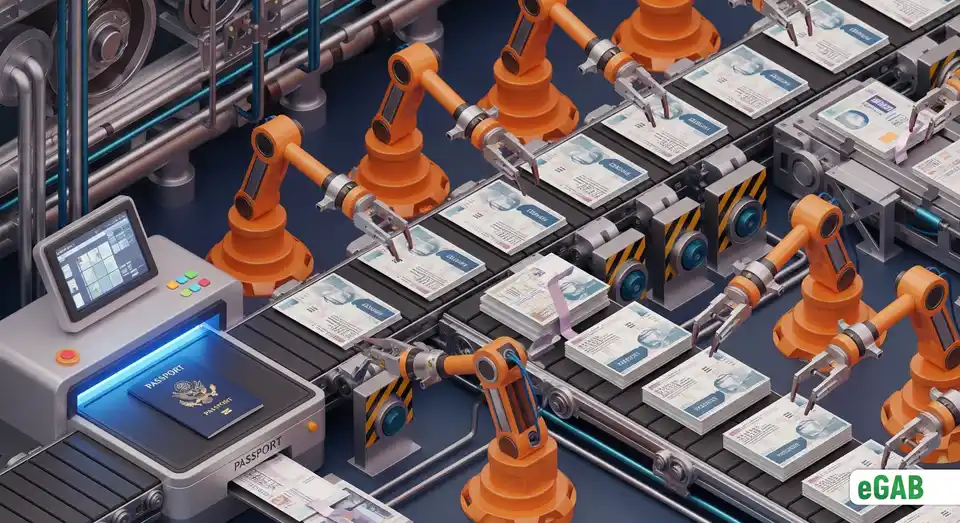
How Forgers Defeat Common Security Features
So, what about all those security features designed to stop forgers? We're talking about the watermarks, holograms, and microprint that are supposed to make documents tamper-proof . The unfortunate truth is that for every security measure, a determined forger has a clever method for bypassing document security features . This brings us to a critical question: are holograms and watermarks still effective security features? In most cases, the answer is a hard no.
- Watermarks are faked with surprising ease. A forger might print a faint, grayscale version of the official design right onto their counterfeit paper. They can also use oil, varnish, or pressure to create a see-through effect that looks completely genuine when the document is held up to the light.
- Holograms , once seen as the ultimate security feature, are now easily beaten. Forgers just go online and buy counterfeit holographic foils and overlays, which are mass-produced to look nearly identical to the official ones.
- Signatures are still one of the most vulnerable points on a document. A forger can scan a real signature at high resolution and digitally place it on a fake document so perfectly that a simple visual check won't ever catch the forgery.
- And what about those intricate background patterns and microprint ? The very elements designed to blur or disappear when copied can now be captured flawlessly by high-DPI (Dots Per Inch) scanners. Modern printers can then reproduce them with enough detail to fool anyone who doesn't have forensic tools.
The hard truth is that modern printing and scanning technology has become so good that it can create fakes that are virtually indistinguishable from the real thing to the naked eye. So how can you tell if a document has been forged? The only way to be absolutely sure is with a forensic examination . This process requires specialized tools like stereomicroscopes (which give you a 3D view of an object) and video spectral comparators (devices that use different light wavelengths to reveal alterations). For anyone who needs to know how to spot a fake document , understanding the limits of a simple visual check is the most important first step.
Next Step: The arms race against forgery has clearly moved beyond what our eyes can see. Since physical features can be copied so effectively, the only truly reliable defense is a digital one. The future of document security isn't in better paper or fancier holograms; it's in cryptographic verification . This is a system where authenticity is proven with mathematical certainty, not just with a quick visual check.
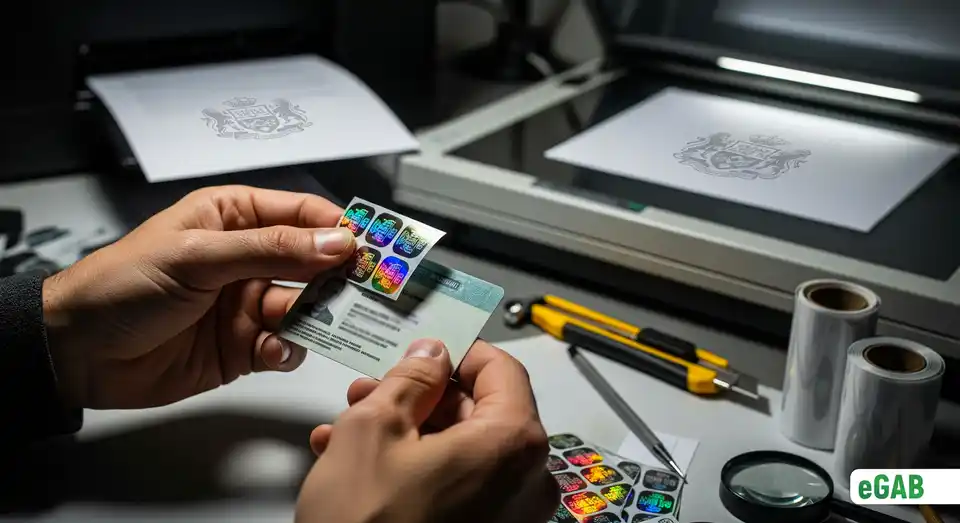
How eGAB Makes Forgery Technically Impossible
How can you be sure the piece of paper in your hand-or the PDF on your screen-is the real deal? In a world of high-res scanners and slick editing software, the truth is, you can't be. Looking at it just isn't a reliable defense anymore. This is where the eGAB ecosystem changes the game completely, turning vulnerable documents into secure, verifiable digital assets powered by the blockchain .
We don't just make a digital copy; we forge a cryptographic original. We assign every document issued through eGAB a unique, unchangeable hash. You can think of this hash as the document's digital DNA-a complex code that is mathematically unique to its exact contents. If you alter a single pixel, move a comma, or change a date, the hash changes completely. This makes any tampering instantly and automatically detectable.
Verification is no longer a matter of opinion or an expert's best guess. With an eGAB credential, anyone can scan a simple QR code to run an instant, on-chain check against the permanent, original record. There’s zero room for doubt and no chance of a sophisticated fake getting through. The system doesn't ask you to trust what you see; it gives you the tools to mathematically prove it.
Did You Know? A document's cryptographic hash is so sensitive that changing the font size of a single period would create a completely different hash. This extreme precision is exactly what makes blockchain-based verification an absolute, unforgeable guarantee of authenticity.
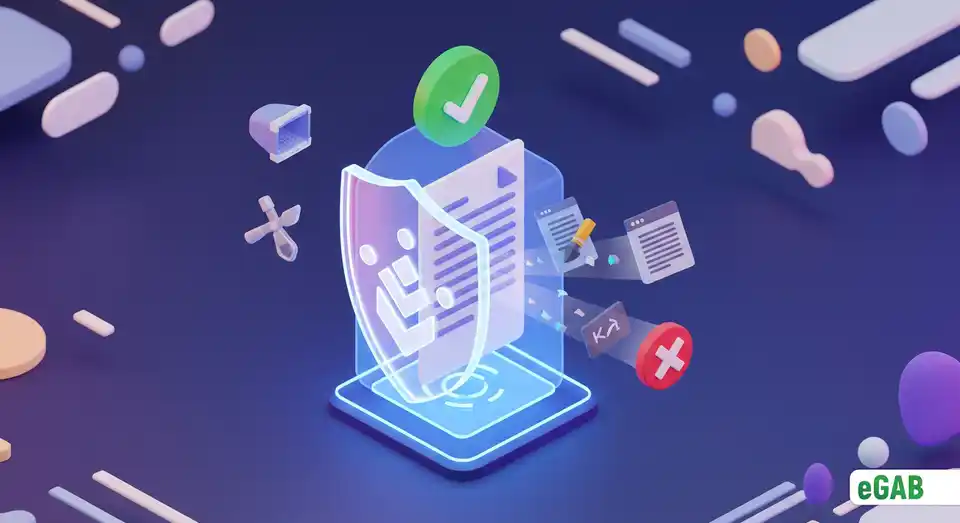
Summary: The End of an Illusion-How Modern Forgery Shattered Paper Security
So, where does that leave us? With a stark realization: the trust we’ve all put in paper documents is built on a dangerously fragile foundation. This article is your wake-up call, revealing how the entire system is fundamentally broken, thanks to its own deep-seated flaws and the rise of incredibly sophisticated forgery.
It all starts with the core paper document security risks . Here’s the critical vulnerability: a paper document has no built-in way to prove it’s authentic. It lacks any universal standards or a unique cryptographic security "fingerprint." This single weakness opens the door wide to human error and physical data breaches-and as statistics show, both are alarmingly common and incredibly costly.
From that starting point, you can see just how ruthlessly this weakness is exploited. The world of modern document forgery has become a two-front war. On one side, you have the alteration of genuine documents using classic forgery techniques like chemical washing and signature lifting, now supercharged by the precision of digital alteration with tools like Photoshop. On the other side, you have the creation of fakes from scratch, which has evolved into an industrialized process some even call Fraud-as-a-Service . Criminals have powerful tools at their fingertips, from high-DPI scanners and sprawling dark web marketplaces full of templates to easy access to specialty papers. As a result, they can now mass-produce fakes that are so convincing they’re fueling a widespread crisis of identity document fraud .
What’s most alarming? Forgers are actively and successfully bypassing the security features we once thought were foolproof. Watermarks are convincingly faked using oil or faint printing. Counterfeit holograms are easily bought online. Even intricate microprint is captured perfectly by modern scanners. In this escalating arms race, a simple visual check is no longer enough. Spotting a sophisticated fake often requires a full forensic examination .
Ultimately, all these points lead to one powerful, unavoidable conclusion: the battle for security cannot be won on paper. Because physical features can be copied so perfectly, the only reliable path forward is cryptographic verification . This is a system designed to prove a document’s integrity with mathematical certainty, making a forger's physical tricks instantly irrelevant.
➡️ Let's connect the dots. Understanding how fakes are made reveals a bigger problem. See why the system for verifying international credentials is broken.
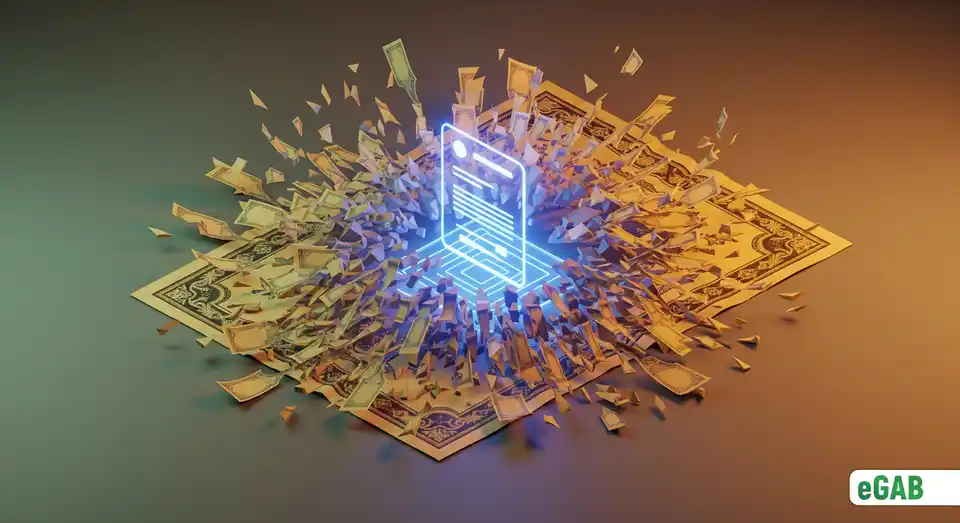
The Hidden Risks of Your Archive: A Guide to Secure Document Storage
The True Cost of Paper Documents: Calculating the Hidden Expenses in Your Document Workflow
Fire, Flood, or Loss: How to Create a Disaster-Proof Document Storage Strategy
How Much Time Are Your Employees Wasting on Paperwork? (A Productivity Analysis)
Is Your Office Drowning in Paper? The Real Estate Cost of Document Storage
